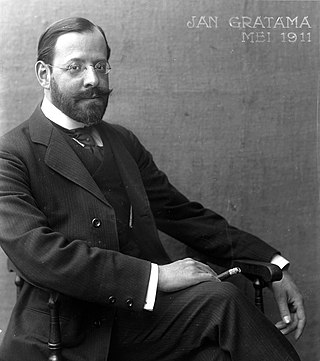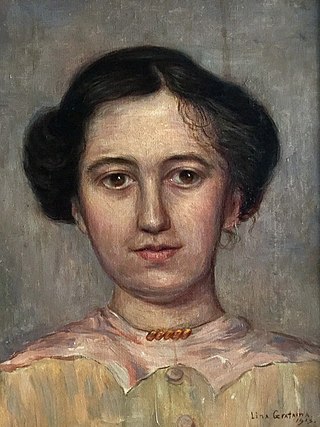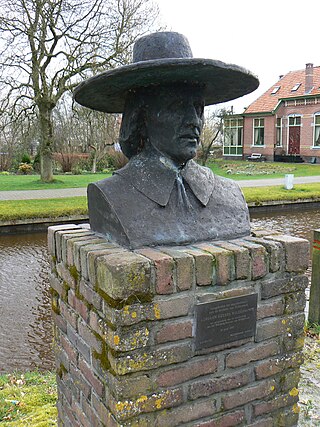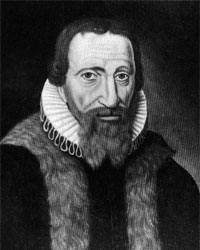













This is a chronological list of notable people from Groningen, who were either born and raised there, were long-term residents, or otherwise have a strong association with the area.














This is a chronological list of notable people from Groningen, who were either born and raised there, were long-term residents, or otherwise have a strong association with the area.
De Vries is one of the most common Dutch surnames. It indicates a geographical origin: "Vriesland" is an old spelling of the Dutch province of Friesland (Frisia). Hence, "de Vries" means "the Frisian". The name has been modified to "DeVries", "deVries", or "Devries" in other countries.
Gerrit is a Dutch male name meaning "brave with the spear", the Dutch and Frisian form of Gerard. People with this name include:

Academie Minerva is a Dutch art academy.
The Dutch male given name Hendrik is a cognate of the English Henry. The spelling Hendrick or Henderick was interchangeable until the 19th century. Birth names of people with this name can be Latinized to Henderickus, Hendricus, Hendrikus, or Henricus, while common nicknames for Hendrik are Han, Hein, Henk, Hen, Hennie, Henny, Henrie, Henry, Hendrie, Hendry, Rijk, Ric, Rick, Ricky, Rickie, and Rik. People with Hendrik, Henderick, or Hendrick as their first name include:

Zorgvlied is a cemetery on the Amsteldijk in Amsterdam, the Netherlands, on the left bank of the river Amstel. The cemetery was opened in 1870 by the city of Amstelveen which still owns and operates it, though since 1896 it is located within the boundaries of the city of Amsterdam. One of the country's best-known cemeteries, it is notable for the large number of celebrities, especially from the literary and theater worlds, buried there.

Gerrit David Gratama, was a Dutch artist, writer, and director of the Frans Hals Museum.

Jan Gratama, was a Dutch architect.

Onze Kunst van Heden was an exhibition held in the winter of 1939 through 1940 at the Rijksmuseum in Amsterdam. Due to the threat of invasion in the years leading up to World War II, the Netherlands' government stored many items from the Rijksmuseum's permanent collection. The resulting empty gallery space was utilized by contemporary Dutch artists to exhibit and sell their art. It was organized by the director of the Rijksmuseum Frederik Schmidt Degener. The show was open to all artists, with each artist allowed to enter four pieces. 902 artists exhibited 3,200 works of art in 74 rooms and cabinets of the Rijksmuseum.
„De kunstenaar kan in tijden van maatschappelijke benauwenis weinig positiefs doen om rampen af te wenden, maar wel kan hij door mede te helpen nationale uitingen op het eigenaardigst naar voren te brengen het gemeenschapsbesef versterken. Wanneer de belangstelling van het publiek uitgaat naar deze manifestatie, die in zulk een omvang in Holland nog niet gezien is, dan zal menige kunstenaar zich op zijn beurt gesterkt voelen".
"The artist can do little positive in times of social distress to avert disasters, but he can, by helping to bring out national expressions in the most idiosyncratic way, strengthen the sense of community. When the public is interested in this event, which has not yet been seen to such an extent in Holland, many artists will feel strengthened in turn."

Petronella Johanna Carolina "Lina" Gratama (1875–1946) was a Dutch painter, art historian, and political activist.

Alida van Houten (1868-1960) was a Dutch painter.

Dirk de Vries Lam was a Dutch painter who specialized in cityscapes. The name De Vries, from his mother's side of the family, was added, by official permission, in 1897.

Adriaan Geerts Wildervanck was a Dutch businessman and coloniser. In 1643, he lost most of his money when De Oevelgunne stranded on the Boschplaat with expensive lace. In 1647, he founded the Muntendammer Company to exploit a peat colony. As part of the colony, the villages of Wildervank (1647) and Veendam (1648) were established.

The Canon of Groningen is a list of 40 hallmarks and 52 icons that provides a chronological summary of the history of the city and province of Groningen.